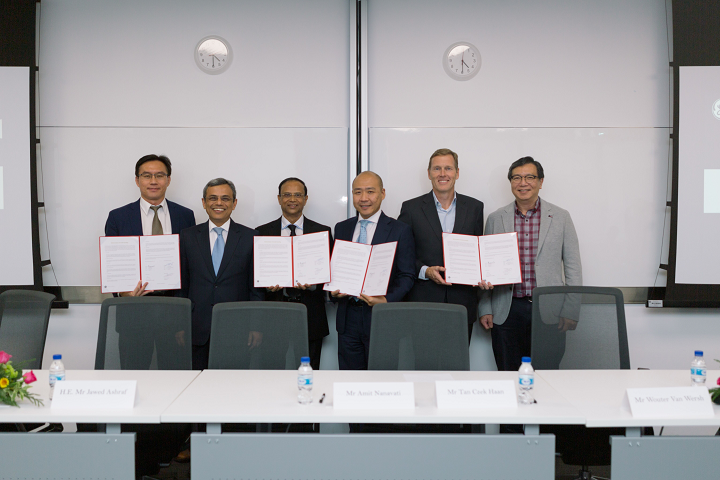Bralco Advanced Materials, a Singapore-based research and development company specializing in metal additive manufacturing, has announced that it has signed an MoU with award winning OEM GE Additive.
The purpose of the MoU is to progress the development of 3D printed magnetic components. Specifically, the agreement will focus on the Asia Pacific region, with the aim of developing 3D printing magnets that are suitable for demanding applications in the aerospace, medical, automotive, energy, industrial automation and robotics industries.
“Bralco is honored to be working with GE Additive in this very exciting space of digital industry 4.0. This collaboration is a major milestone for us, coming at a time when the demand for soft and hard magnets is growing rapidly due to their use in every aspect of modern life be it health care, mobility, personal communication devices, renewable energy or robotics,” comments Amit Nanavati, Founder & CEO of Bralco.
“Moreover, the adoption of additive manufacturing technology will save millions of dollars in material cost due to the additive nature of this technology compared to the traditional manufacturing processes.”

Developing soft and hard magnets using GE Additive technology
Bralco focuses on the application research, product development and commercialization of additively manufactured functional components using advanced metallic and magnetic materials. The company devotes its research specifically to 3D printed parts produced using laser powder bed fusion (LPBF) and direct metal laser melting (DMLM) processes.
Working with the additive manufacturing and powder technologies of GE Additive, Bralco will direct its efforts to accelerating the development of soft and hard magnets. It aims to produce components with complex shapes, differentiated magnetic fields and high mechanical strength. These 3D printed magnetic components will also be developed to withstand elevated temperatures, high frequencies and high torque conditions for applications such as the traction motors of electric vehicles.
“We are very excited to set up our first R&D Lab and Product Innovation Centre in Singapore, fully equipped with GE Additive machine and a state-of-the-art powder and built parts testing and characterization lab,” adds Nanavati.
Under the MoU, it is also possible that Bralco will gain access to AP&C, the metal 3D printing powder production arm of GE Additive. The MoU further contemplates the positioning of Bralco as a service provider for 3D printing components in the Asia Pacific region. Potentially, the company would carry out this role using GE Additive 3D printers and powders that are based on the composition of Bralco’s own magnetic materials. Nanavati continues, stating that:
“We, at Bralco, are very excited to be right at the front of this leap into the digital future. We look forward to exploring groundbreaking discoveries through our work with GE Additive in this next chapter of our journey.”

Research into 3D printed magnets
The production of magnetic parts is an area of 3D printing that is under constant development, with various institutions researching groundbreakings methods of integrating 3D printing technology with magnetism. In October 2018, students at ETH Zürich, Switzerland, developed an additive manufacturing technique to manufacture objects containing magnets.
Recently, a team of scientists from the Lawrence Berkeley National Laboratory used a modified 3D printer to produce liquid droplets imbued with magnetic properties. The combined liquid and magnetic properties can potentially lead to applications such as artificial cells that can deliver targeted cancer therapies, or flexible liquid robots that can change their shape to adapt to their surroundings.
In March 2019, engineers from McMaster University in Hamilton, Canada, developed a 3D bioprinting method using magnets to rapidly produce cell clusters, which was used to 3D print cancer tumors within six hours. This process is designed to create an alternative laboratory environment mimicking conditions inside the body for regenerative medicine research – reducing the need for animal testing.
Subscribe to the 3D Printing Industry newsletter for the latest news in additive manufacturing. You can also keep connected by following us on Twitter and liking us on Facebook.
Looking for a career in additive manufacturing? Visit 3D Printing Jobs for a selection of roles in the industry.
Featured image shows signing of the MoU between Bralco and GE Additive. Photo via Bralco.


